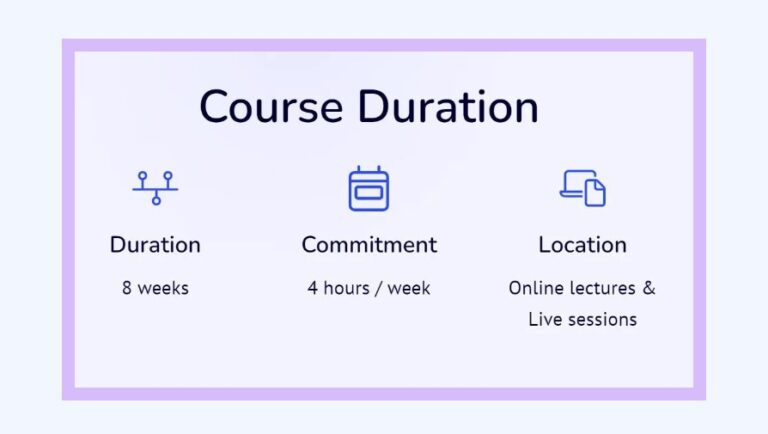In today’s competitive market, businesses face constant pressure to adapt and innovate. AI plays a crucial role in achieving these objectives. Companies that embrace AI can improve efficiency, drive growth, and respond effectively to customer needs.
An AI strategy framework provides a structured approach for organizations. This framework helps integrate AI technology seamlessly into existing operations. It ensures that businesses can implement AI initiatives effectively while minimizing disruption.
Aligning AI initiatives with overall business goals is essential for sustainable success. When AI efforts are consistent with a company’s vision, they yield better results. A well-defined strategy can guide organizations toward achieving their objectives while maximizing the potential of AI technologies.
Understanding the AI Strategy Framework
Definition
An AI strategy is a structured approach to integrating artificial intelligence into business operations. It guides organizations in aligning AI initiatives with their goals. This framework helps businesses leverage AI effectively while minimizing risks.
Key Components
Several essential elements comprise a successful AI framework:
- Vision and Objectives
Establishing a clear vision is the first step. Businesses need to define specific, measurable objectives for their AI initiatives. These objectives should align with the overall business strategy and long-term goals.
- Stakeholder Engagement
Engaging key stakeholders is crucial for success. Involving employees, management, and external partners ensures that everyone understands the AI strategy. This alignment fosters collaboration and support throughout the implementation process.
- Technology Assessment
A thorough evaluation of available technologies is necessary. Organizations should assess existing tools and identify new technologies that fit their needs. This assessment helps determine the best solutions for achieving business objectives.
- Implementation Roadmap
Creating a detailed roadmap guides the AI implementation process. This roadmap should outline key milestones, timelines, and resource allocation. A well-defined plan helps organizations stay on track and measure progress.
- Evaluation Metrics
Establishing evaluation metrics is vital for assessing success. Businesses should define key performance indicators (KPIs) to track the effectiveness of their AI initiatives. Regularly measuring progress allows for necessary adjustments to the strategy.
Importance
Adopting a structured framework for AI strategy is essential for several reasons. It provides clarity and direction, ensuring that AI efforts align with business goals. Additionally, a framework helps mitigate risks associated with AI implementation. Organizations can maximize the potential benefits of AI by following a systematic approach. In today’s rapidly evolving technological landscape, a well-defined AI strategy framework is crucial for long-term success.
Aligning AI with Business Goals
Identifying Business Goals
To effectively integrate AI, businesses must first define and prioritize their organizational goals. Start by conducting a thorough analysis of current objectives. Engage team members across all levels to gather insights. Use tools like SWOT analysis to identify strengths, weaknesses, opportunities, and threats. Once the organization has a clear understanding of its goals, prioritize them based on their potential impact and feasibility. This structured approach creates a roadmap for AI initiatives that directly support these priorities.
Mapping AI Initiatives to Goals
After identifying and prioritizing business goals, the next step is mapping specific AI projects to these objectives. Begin by reviewing potential AI applications that align with the defined goals. For instance, if improving customer service is a priority, consider implementing AI chatbots for faster responses. Develop a clear connection between each AI initiative and the relevant business goal. This alignment ensures that resources are allocated effectively and that AI projects contribute directly to the organization’s success.
Continuous Alignment
Business goals are not static; they evolve as market conditions change. Therefore, maintaining alignment between AI initiatives and organizational objectives is crucial. Regularly review both business goals and AI projects to assess their relevance. Establish a routine for evaluating the effectiveness of AI applications. By doing so, organizations can make timely adjustments to their strategies. This ongoing alignment fosters a culture of agility and responsiveness, ensuring that AI continues to support business success as priorities shift.
Benefits of an AI Strategy Framework
- Increased Efficiency
An AI strategy significantly streamlines processes within organizations. By clearly defining roles and responsibilities, teams can allocate resources more effectively. Automation of repetitive tasks allows employees to focus on higher-value activities. This leads to faster project completion and improved productivity across departments. Ultimately, a structured approach enables businesses to achieve their goals with fewer resources.
- Improved Decision-Making
AI enhances data analysis and informs strategic choices. With advanced algorithms, organizations can process vast amounts of data quickly. This capability provides actionable insights that guide management in decision-making. Moreover, AI can identify trends and patterns that may go unnoticed. As a result, businesses can make informed decisions that drive growth and performance.
- Enhanced Collaboration
AI fosters teamwork across departments by breaking down silos. Collaborative tools powered by AI facilitate communication and information sharing. Teams can access real-time data, improving coordination and reducing misunderstandings. This interconnectedness encourages innovation and helps organizations respond more effectively to challenges. Consequently, a collaborative environment boosts overall organizational performance.
- Measurable Outcomes
A structured AI framework leads to quantifiable results. By setting clear goals and metrics, organizations can track progress over time. Regular evaluations of AI initiatives reveal areas of success and those needing improvement. This approach enables businesses to refine their strategies continuously. As a result, organizations can demonstrate the tangible benefits of their AI investments.
Common Challenges in Implementing the AI Strategy Framework
Cultural Resistance
Cultural resistance often arises when implementing new technologies. Employees may fear job displacement or feel uncomfortable with change. To overcome this challenge, organizations should prioritize open communication. Engaging employees early in the process fosters a sense of ownership. Training programs can also ease concerns by helping staff develop necessary skills.
Data Privacy Concerns
Navigating legal and ethical issues related to data usage is crucial. Organizations must ensure compliance with regulations like GDPR and CCPA. Transparency in data collection practices builds trust among customers and stakeholders. Developing clear policies for data handling can mitigate risks. This proactive approach safeguards the organization’s reputation.
Resource Limitations
Many organizations face challenges related to budget, technology, and human resources. Limited financial resources can hinder AI adoption and implementation. To address this issue, businesses should prioritize initiatives that align with their strategic goals. Exploring partnerships or seeking external funding can also help. Assessing current capabilities will allow for a more efficient allocation of resources.
Steps to Develop an AI Strategy Framework
- Assessment of Current Capabilities
Begin by evaluating existing processes, technologies, and skills within the organization. This assessment identifies gaps and opportunities for AI integration. Understanding current capabilities helps in setting realistic expectations for AI initiatives. Additionally, it allows organizations to identify areas needing improvement or investment.
- Setting Clear Objectives
Define what success looks like in terms of AI implementation. Establish specific, measurable, achievable, relevant, and time-bound (SMART) objectives. Clear objectives guide the development and execution of AI strategies. They also provide benchmarks for evaluating progress over time.
- Choosing the Right Technology
Select AI tools and platforms that fit business needs. Conduct thorough research to identify technologies that align with objectives. Consider factors like scalability, compatibility, and user-friendliness. Engaging stakeholders in this decision ensures that chosen technologies meet diverse needs.
- Developing a Roadmap
Outline the steps for executing the AI strategy over time. A detailed roadmap provides clarity and direction. It should include timelines, milestones, and resource allocation. Regularly revisiting this roadmap allows organizations to adjust to changing conditions.
- Monitoring and Evaluation
Establish processes for assessing performance and refining the strategy. Continuous monitoring helps identify successes and areas for improvement. Setting key performance indicators (KPIs) enables organizations to track progress effectively. This iterative process fosters a culture of continuous improvement.
Conclusion
Aligning AI initiatives with business goals through a structured AI strategy framework is essential. A clear strategy allows organizations to maximize the benefits of AI. This alignment ensures that resources are used effectively and that projects contribute to overall success.
Businesses should adopt an AI strategy framework for long-term success. A well-structured framework facilitates the integration of AI into existing operations. By doing so, organizations position themselves for sustainable growth in a competitive landscape.
Take the leap! Invest in our AI strategy framework to drive innovation and achieve your business goals today!



















